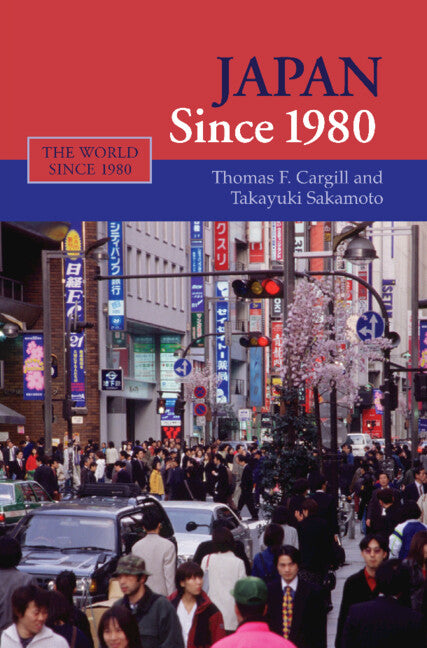Freshly Printed - allow 8 days lead
Couldn't load pickup availability
Japan since 1980
This book provides a complete and self-contained discussion of Japan's economic and political institutions from 1980 up to 2007.
Thomas F. Cargill (Author), Takayuki Sakamoto (Author)
9780521856720, Cambridge University Press
Hardback, published 25 August 2008
328 pages
23.5 x 15.8 x 2.3 cm, 0.56 kg
'The Cargill and Sakamoto book is a masterful review of the recent economic and political history of Japan. The authors detail the persistent efforts of Japanese policy makers to liberate themselves from past traditions and economic policies that caused the economic downturn of the lost decade. They rightfully advise their readers that this effort is still ongoing, even as Japan faces even more daunting demographic challenges in the future.' Hal Scott, Harvard Law School
An analysis of the performance of Japan's economic and political institutions from late 1970s to 2007. The authors explain how Japan's flawed response to new economic, political, and technological forces ushered in a lost decade and a half of economic development from 1990. Impressive economic performance in the 1980s masked an 'accident waiting to happen' - the collapse in equity and real estate prices in 1990–1. Japan's iron triangle of politicians, bureaucrats, and client industries, combined with a flawed financial liberalization process and policy errors by the Bank of Japan and the Ministry of Finance, brought Japan to an abyss of deflation, recession, and insolvency by the late 1990s. The turning point was the election of Koizumi as prime minister in 2001. The book explores Koizumi's economic reform, new developments in socioeconomic conditions, the politics and economy after Koizumi, and the economic and political challenges facing Japan in the new century.
1. Introduction and overview
2. Economic and political institutions in the 1970s
3. The 'high water mark' of the Japanese economy - a 'model' of financial liberalization: 1980 to 1985
4. An accident waiting to happen - the bubble economy from 1985 to 1990
5. Economic and financial distress from 1990 to 2001 and the turning point
6. Why did the economic and financial distress last so long?
7. Transition of political institutions in the 1990s and the new century
8. Political economy of Japan's fiscal program
9. Koizumi administration's reform in broad perspective: fiscal consolidation and market reform
10. Japan's corporate governance, labor practices, and citizens' social and economic life at the beginning of the new century
11. Japanese political economy in the first decade of the new century.
Subject Areas: Economic history [KCZ], Economic systems & structures [KCS], Political economy [KCP], Economics [KC]


